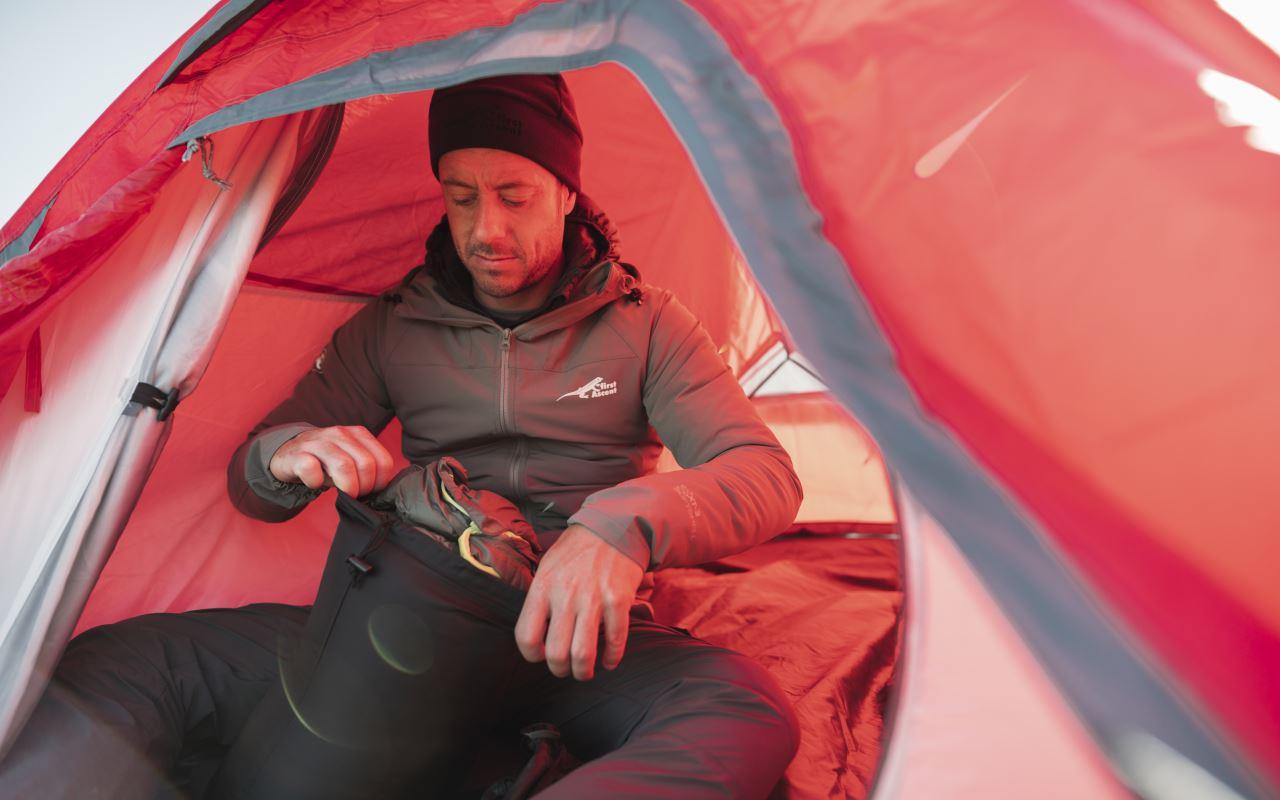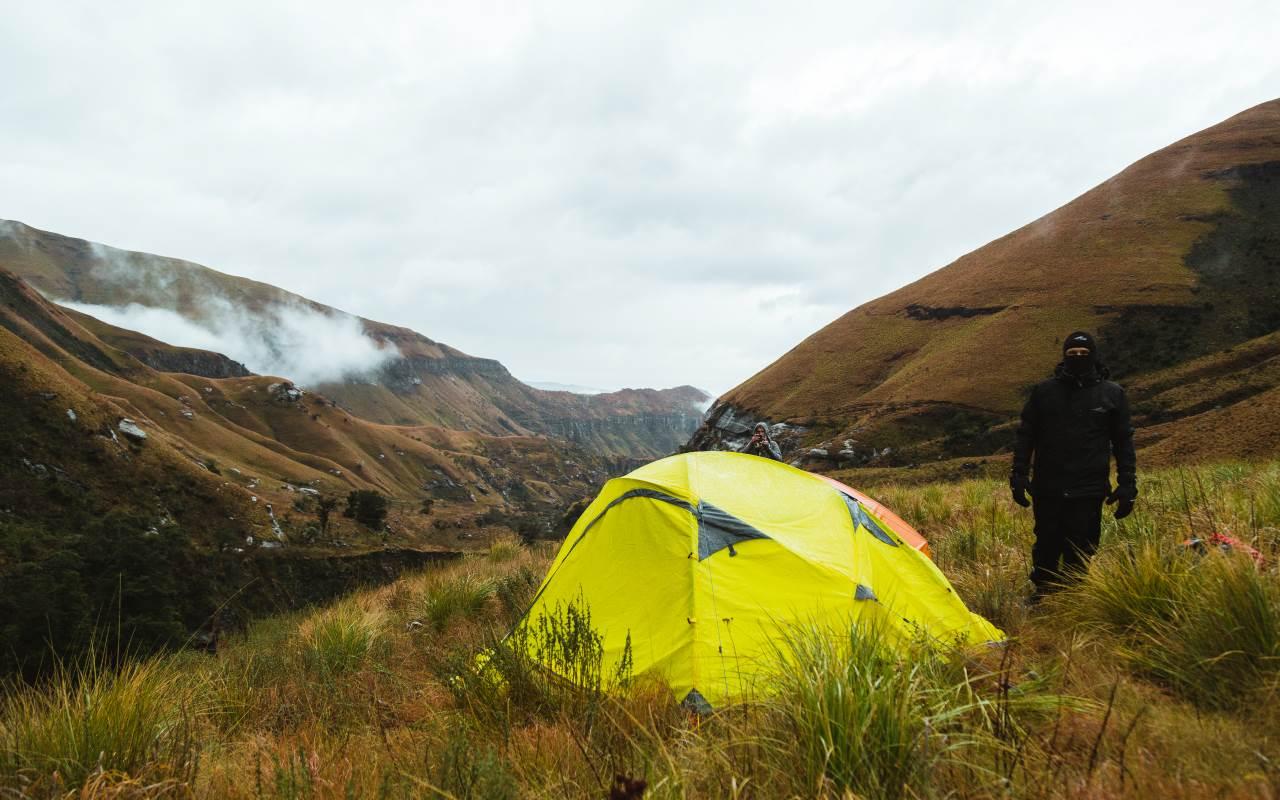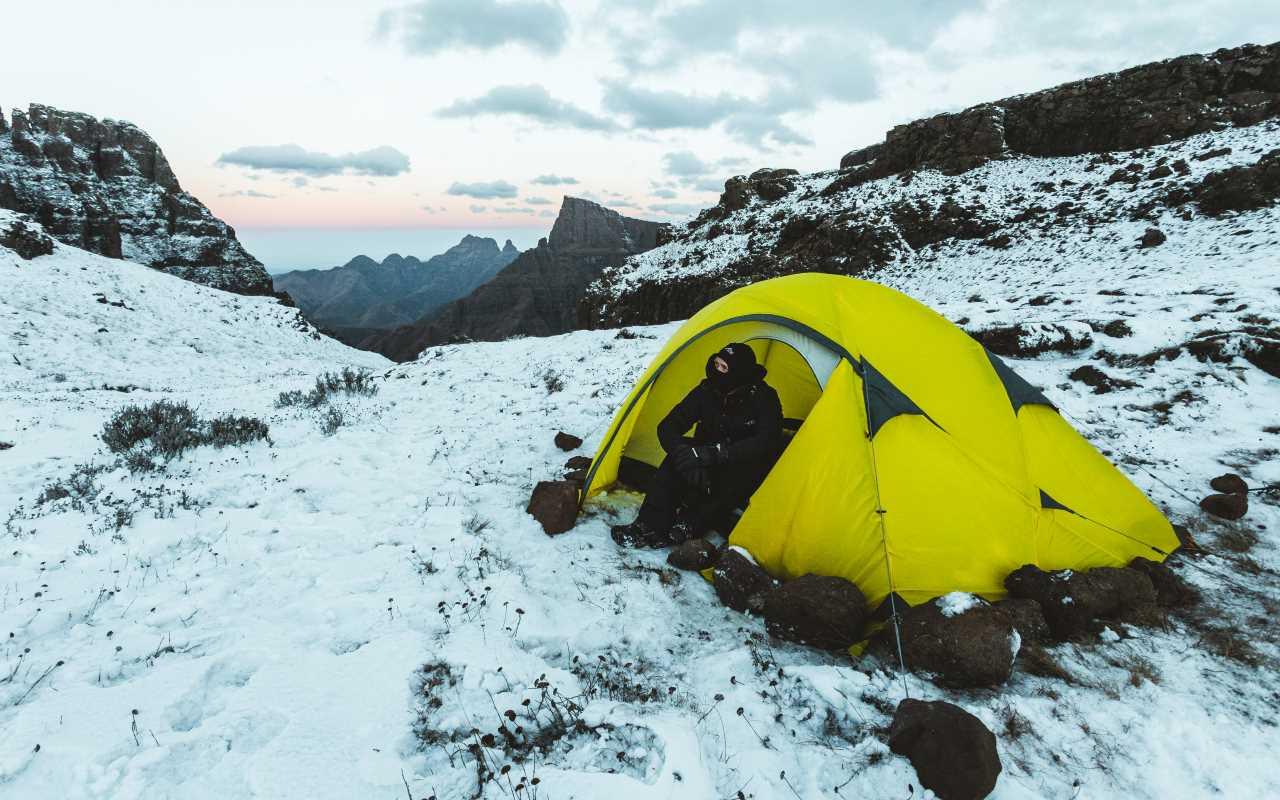For some, winter means hibernation, for others, winter is about beating the summer crowds and finding new, untouched places to explore. There is nothing quite like those tranquil moments and settings, the crackle of a warm night fire and those baron snow landscapes, which only winter can provide.
Here are our top six tips to make your adventure more comfortable this winter.
First and foremost, ensure you check the weather forecast, to make sure you have the correct gear and apparel to handle the type of conditions.
1. Choose your campsite cleverly
Select an area, which is relatively dry, flat and sheltered from the elements. Avoid setting up camp in open areas, where exposure to high wind speeds is imminent. If conditions allow, try to flatten the surface and clear away any snow with your boots or tools - packed ground insulates heat better than loose gravel or snow, as well as provides a flat surface for a comfortable night's rest. A reliable groundsheet, is always a great investment for cold weather camping. Lastly, ensure that your tent is pegged down well, and that the door is facing away from prevailing winds.
2. Choose the right sleeping bag and mattress
When planning your trip, make sure that your sleeping bag temperature rating meets the temperatures, which are forecasted for the trip. If you are uncertain, add a sleeping bag liner to your sleeping bag, this will increase the temperature rating of your bag by approximately 5°C.
Sleeping mattresses are not just there for adding comfort, they have been designed to keep you off the frozen ground, which absorbs your body heat faster than the cold air outside. Investing in a 4-season mattress with an R-value is recommended for cold weather camping.
3. Stay dry
Water conducts heat better than air does, which means wet clothes will quickly lower your core body temperature. Make sure that when packing, you pack a few extra dry layers.
When exercising, take things slow and layer off accordingly, to ensure less perspiration. If you are planning to walk where it is wet or there is snow, invest in a good pair of waterproof boots and gaiters to reduce your chances of cold feet.

4. Layer up
Layer up correctly – starting with a good baselayer. Baselayers are essential in regulating your core body temperature and trapping body heat. You will also want a good insulating layer, which is lightweight, packable and easy to take on-and-off. An outer shell should keep you protected and sheltered from the elements, choose a shell that is waterproof and able to withstand tough conditions.
5. When nature calls, answer
If you need to go, you need to go, don't hold it in. Procrastination will lead to your body burning up valuable calories to heat the urine, which is stored in your bladder. Keep an extra bottle in your tent; this will prevent you from needing to go outdoors to urinate. If a bottle doesn’t cut it for you, there are many products on the market designed to make the experience more pleasant.


